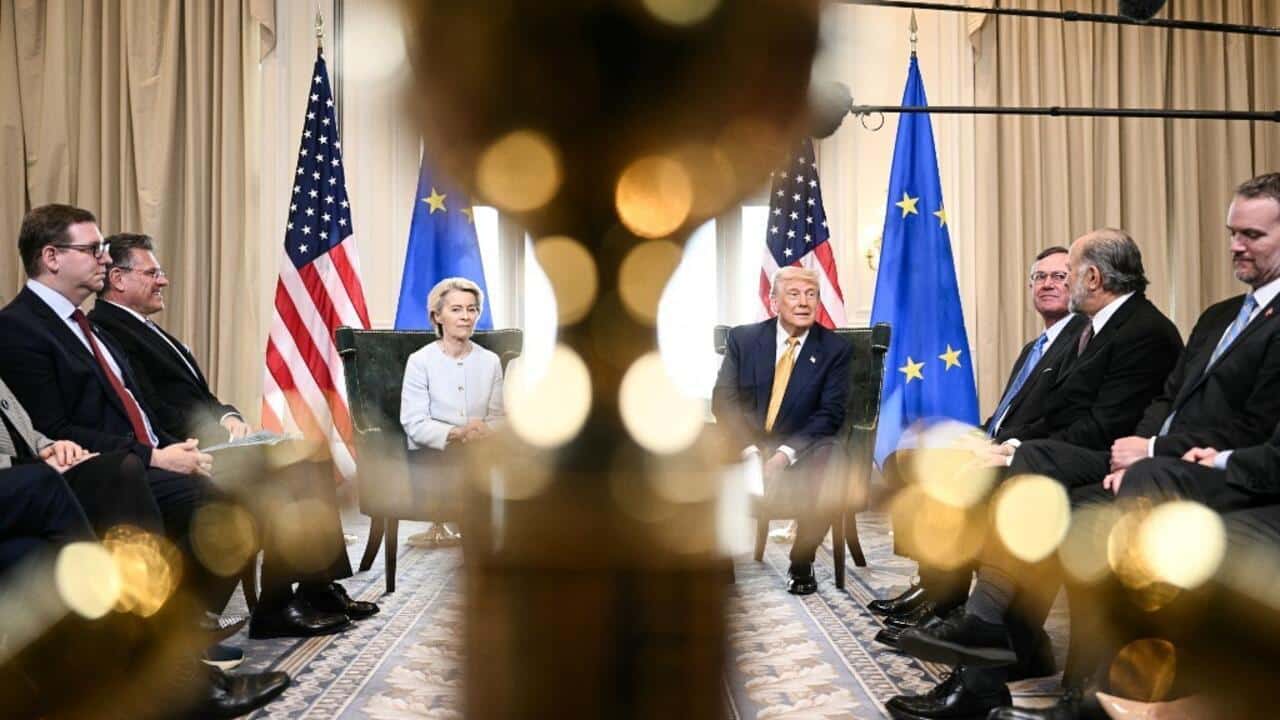EU and US Trade Negotiations: European Union Suspends Tariff Retaliation

In a significant development aimed at reducing trade tensions, the European Union (EU) announced on Tuesday the suspension of its planned retaliatory tariffs on U.S. goods valued at €93 billion (approximately $107 billion). This decision follows a recent agreement between U.S. President Donald Trump and European Commission President Ursula von der Leyen. The suspension is expected to last for six months and comes after extensive negotiations addressing tariff disputes and broader trade issues.
Details of the Suspension
EU trade spokesperson Olof Gill confirmed the suspension, stating, “The Commission has today adopted the necessary legal procedures to suspend the implementation of our EU countermeasures, which were due to kick in on August 7.” This pause in tariffs represents a notable concession from the EU, which is one of the United States’ largest trading partners. The agreement aims to restore stability and predictability for citizens and businesses on both sides of the Atlantic. The EU has committed to working with the U.S. to finalize a Joint Statement, as agreed upon during the discussions on July 27.
The suspension follows a series of negotiations between Trump and von der Leyen, focusing on tariff disputes and broader trade relations. The EU’s decision to suspend tariffs is seen as a step towards fostering a more cooperative trade environment. However, the EU has also indicated that the suspension could be reversed if negotiations falter, emphasizing that the situation remains fluid.
Implications of the Agreement
As part of the agreement, President Trump announced a 15% tariff on most European goods entering the U.S., effective August 8. While this rate is higher than previous tariffs, it is significantly lower than the 30% rate Trump had previously threatened. The EU has also pledged to eliminate several trade barriers, including all tariffs on U.S. industrial exports. This reciprocal arrangement is designed to enhance trade flows between the two regions.
The White House has claimed that the EU will purchase $750 billion worth of U.S. energy and invest an additional $600 billion into the American economy. However, there are concerns regarding the enforceability of these commitments, as the EU cannot compel private companies to make such purchases. The EU has clarified that the agreement reached in July is a political one and not legally binding, which raises questions about its long-term viability.
Future Prospects and Challenges
A senior EU official indicated that both parties are currently working on the specifics of the leaders’ agreement and hope to provide further details soon. The official also warned that the suspension of tariffs could be reinstated if negotiations do not progress as planned. “We put it back into the freezer and we can always take it out if needed,” the official stated, highlighting the precarious nature of the current trade discussions.
As the situation develops, the focus will remain on how effectively both sides can implement the terms of the agreement. The EU’s commitment to removing trade barriers and the U.S.’s imposition of tariffs will be closely monitored by businesses and policymakers alike. The outcome of these negotiations will significantly impact transatlantic trade relations in the coming months.
Observer Voice is the one stop site for National, International news, Sports, Editor’s Choice, Art/culture contents, Quotes and much more. We also cover historical contents. Historical contents includes World History, Indian History, and what happened today. The website also covers Entertainment across the India and World.

